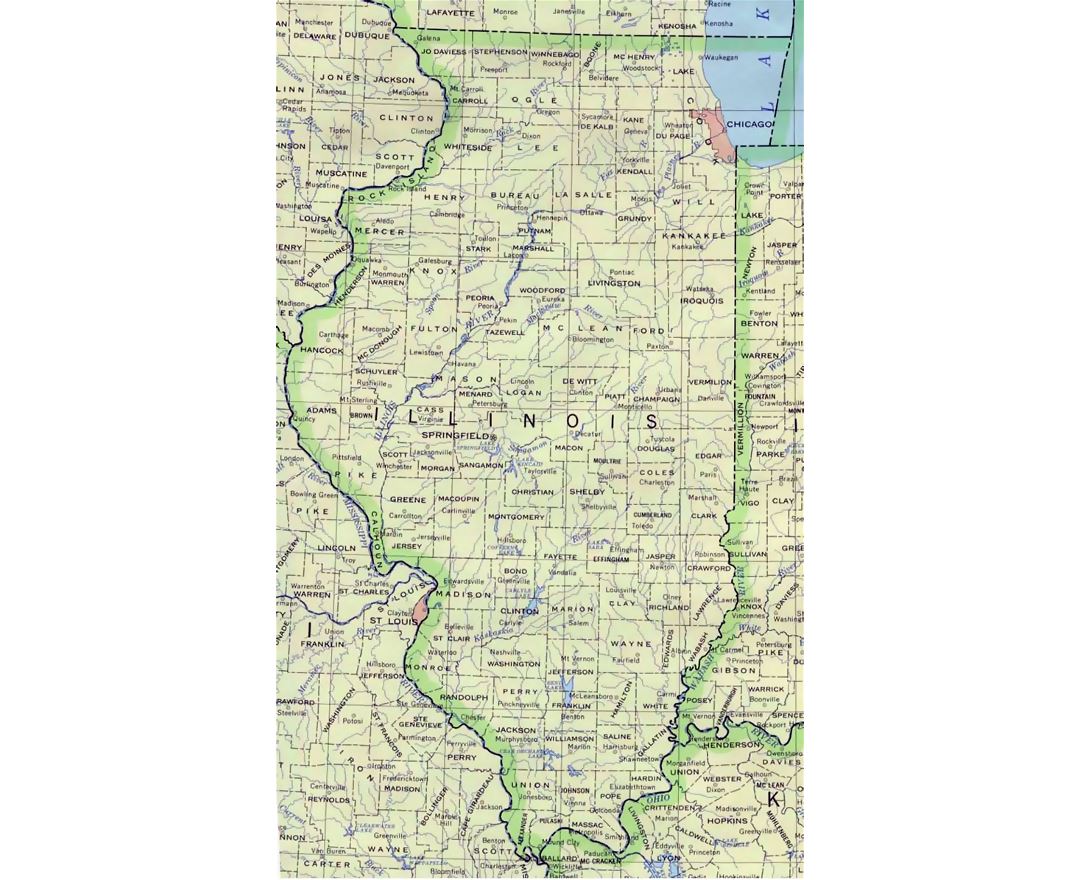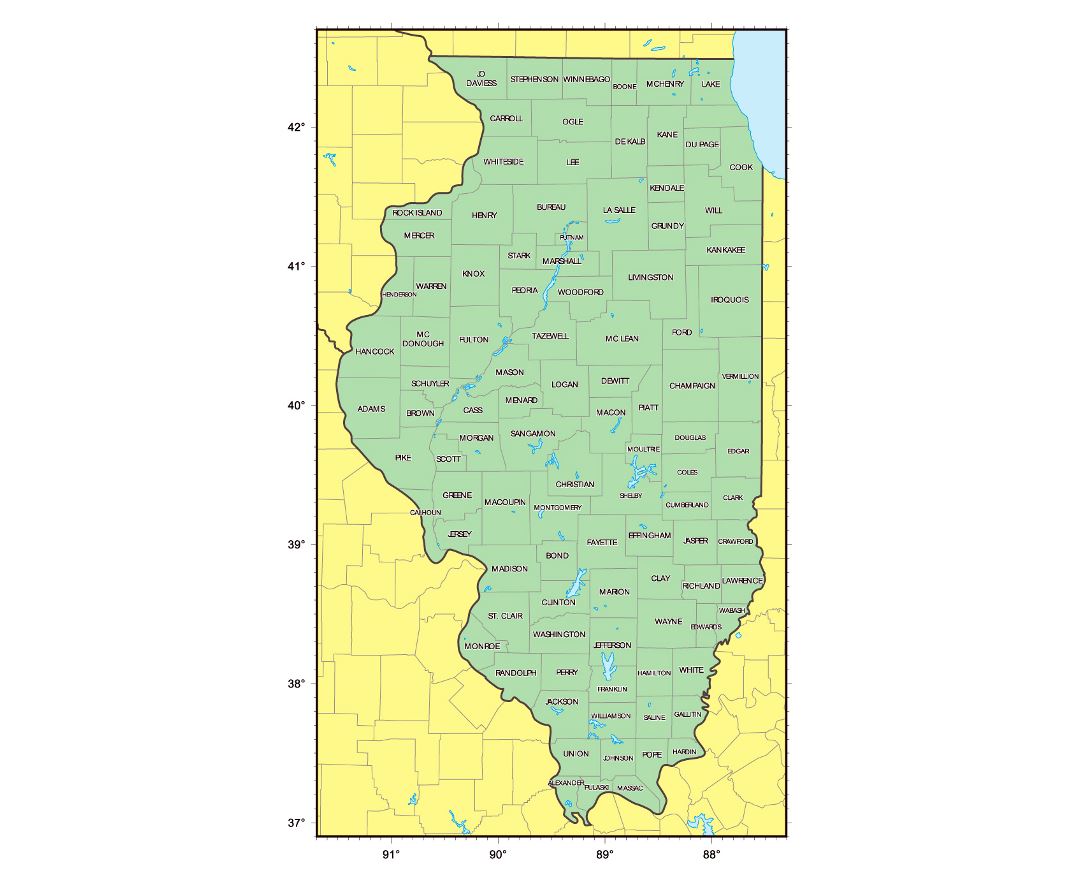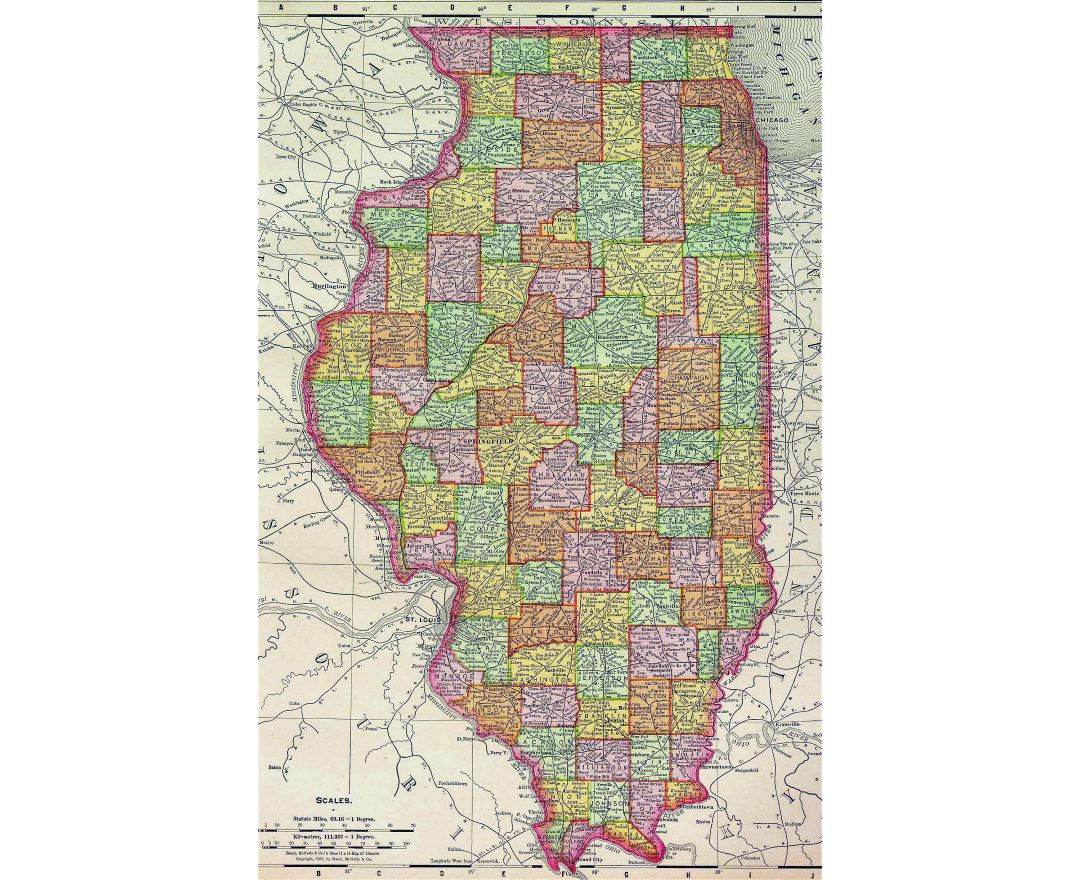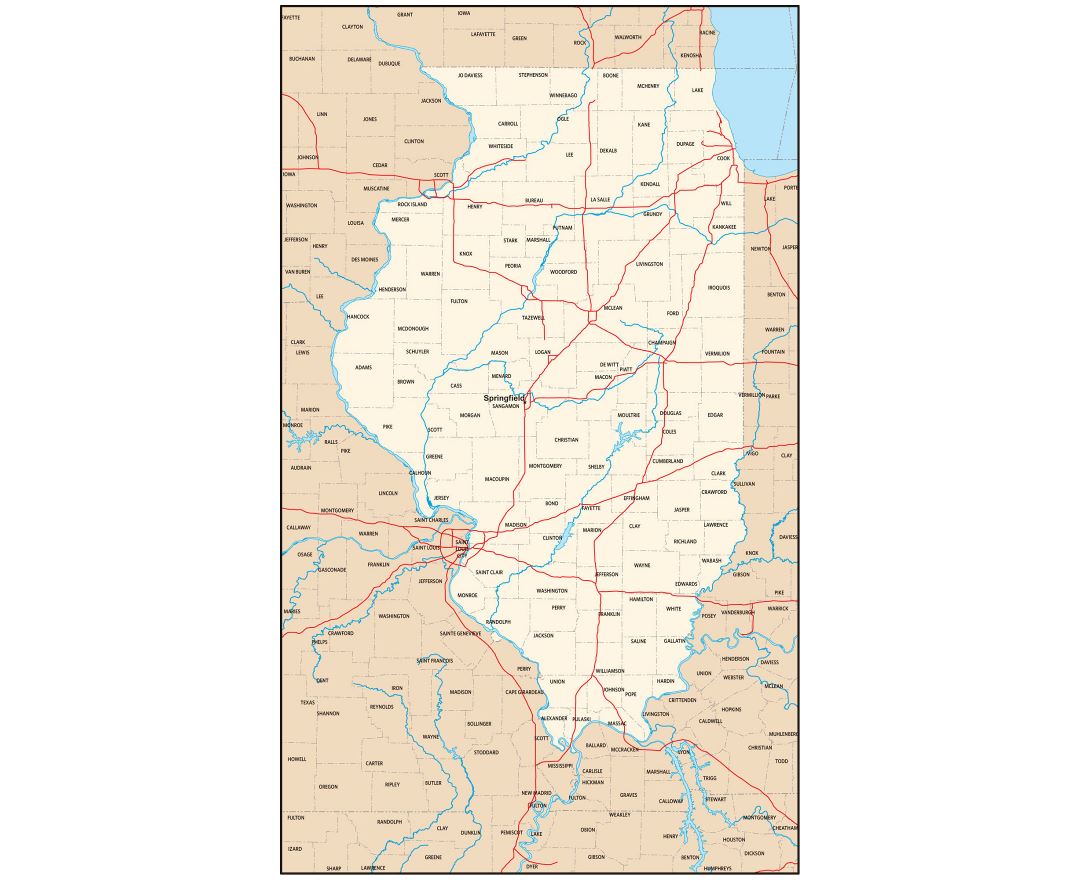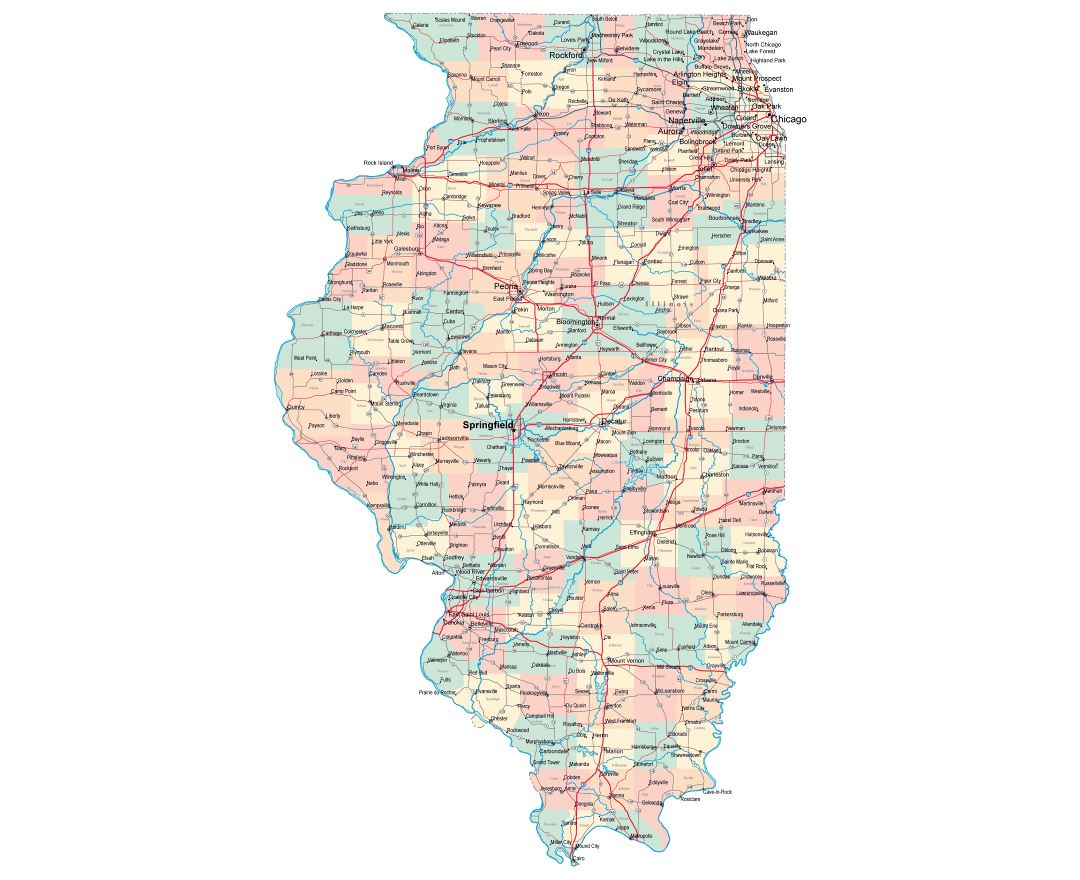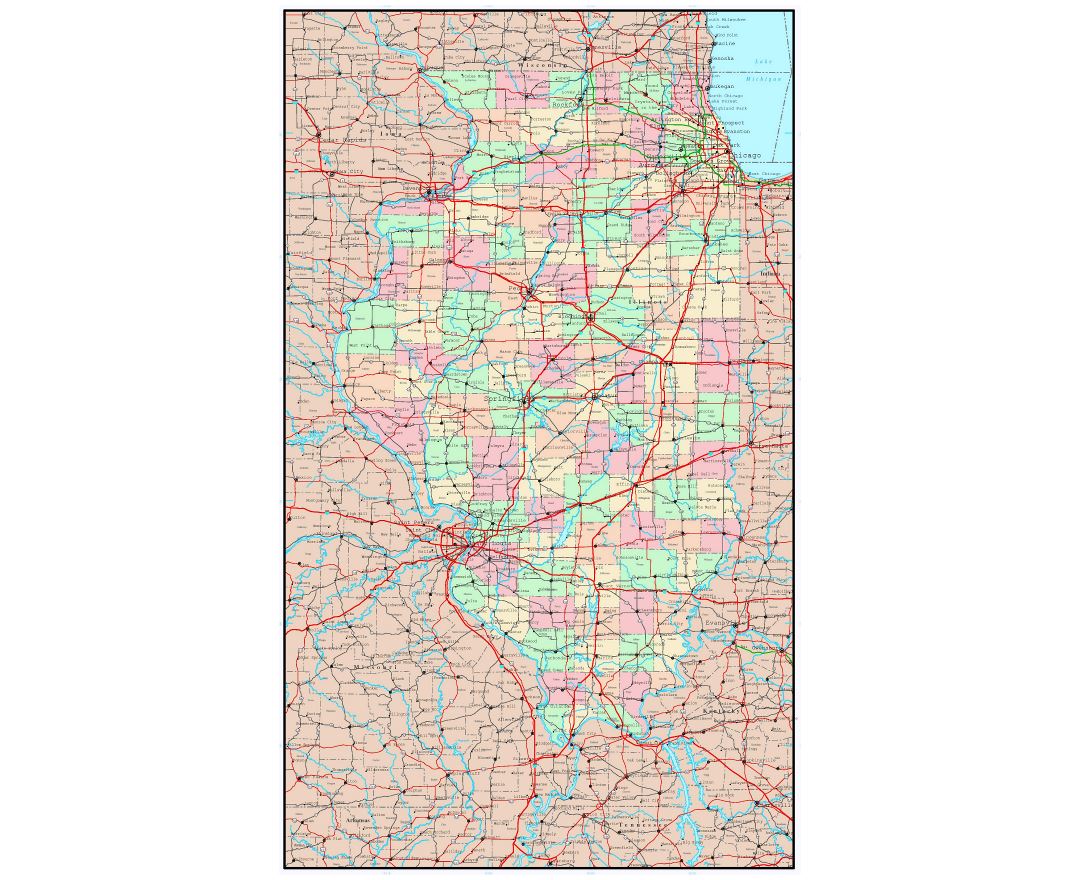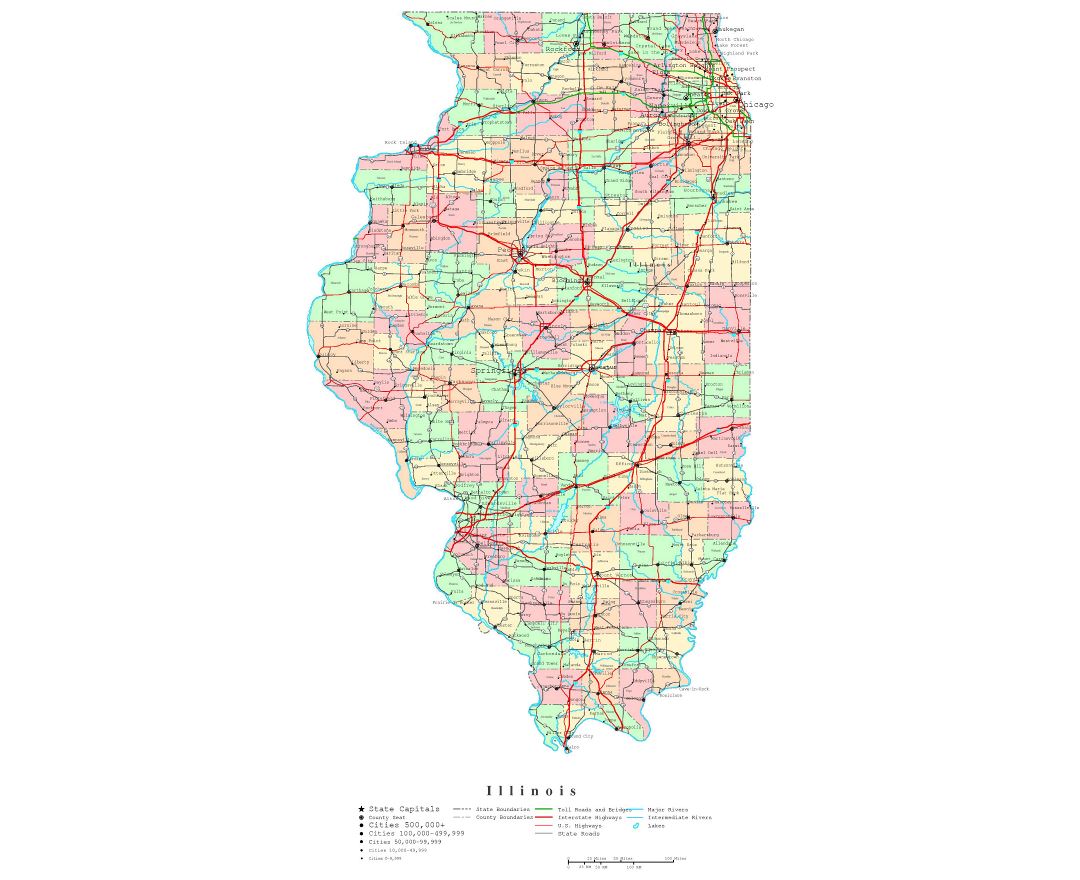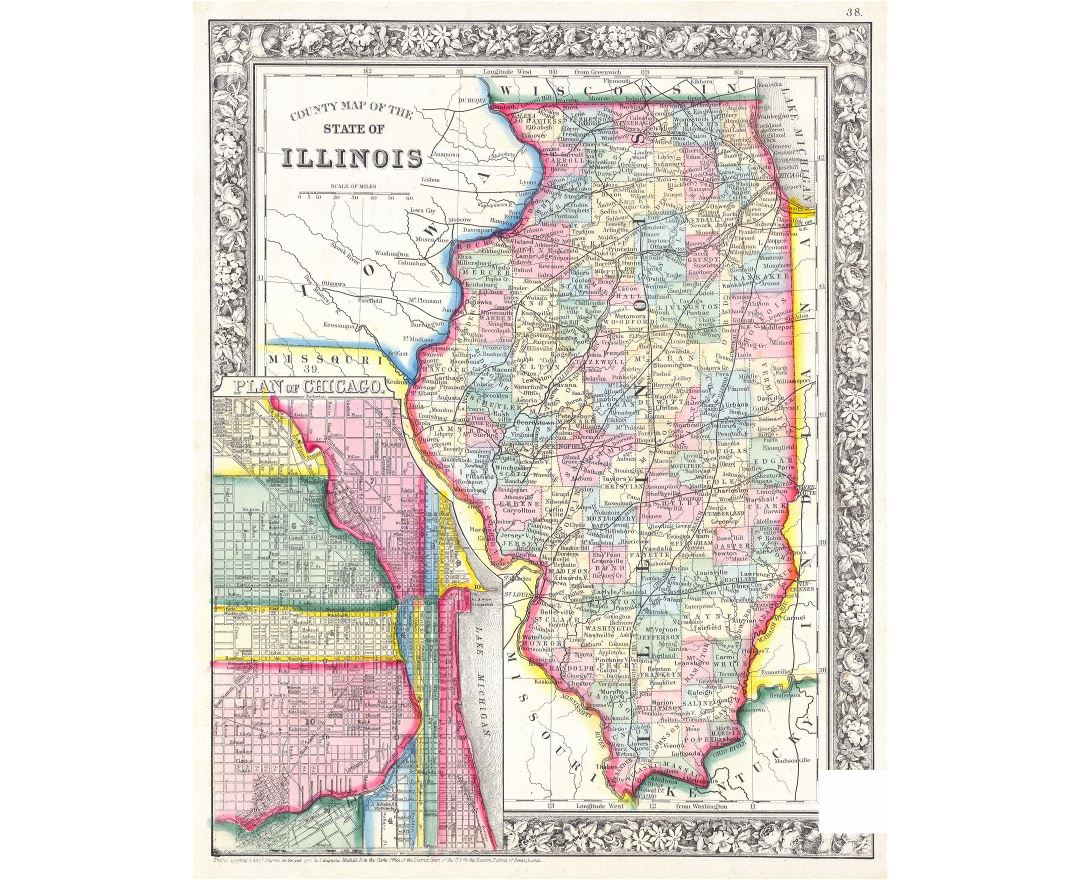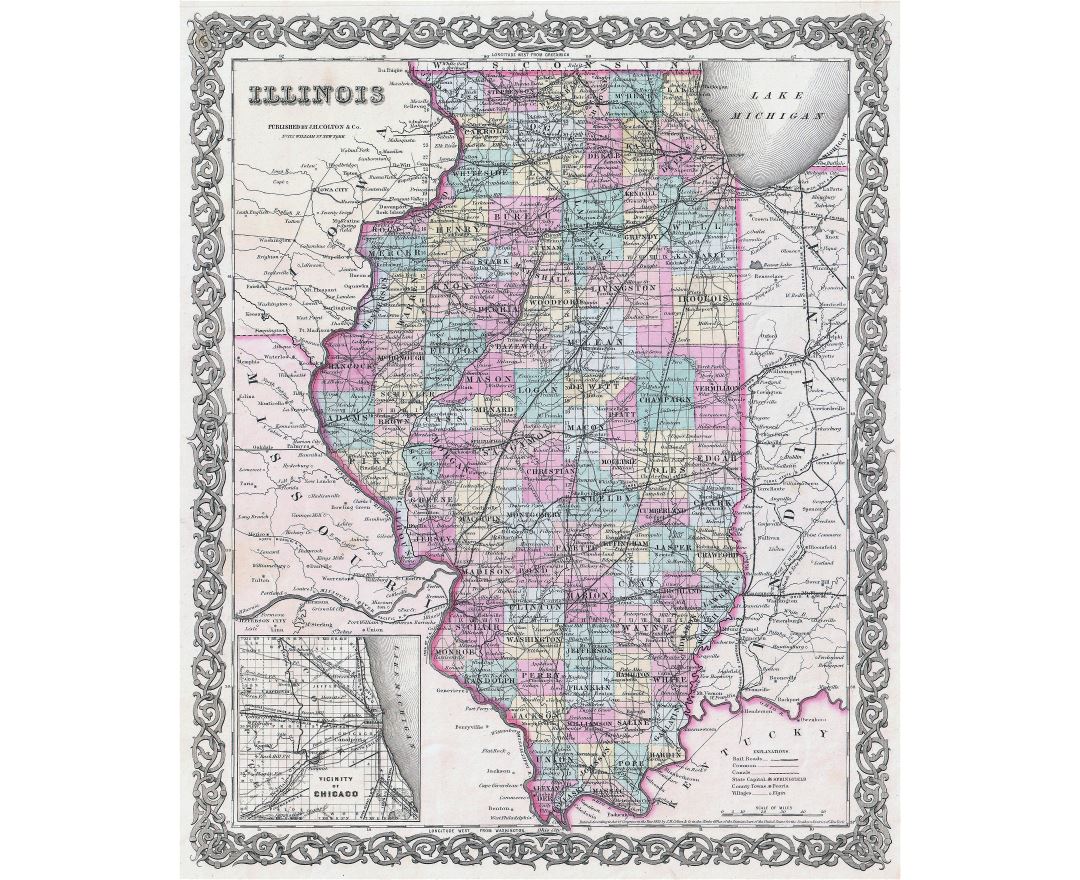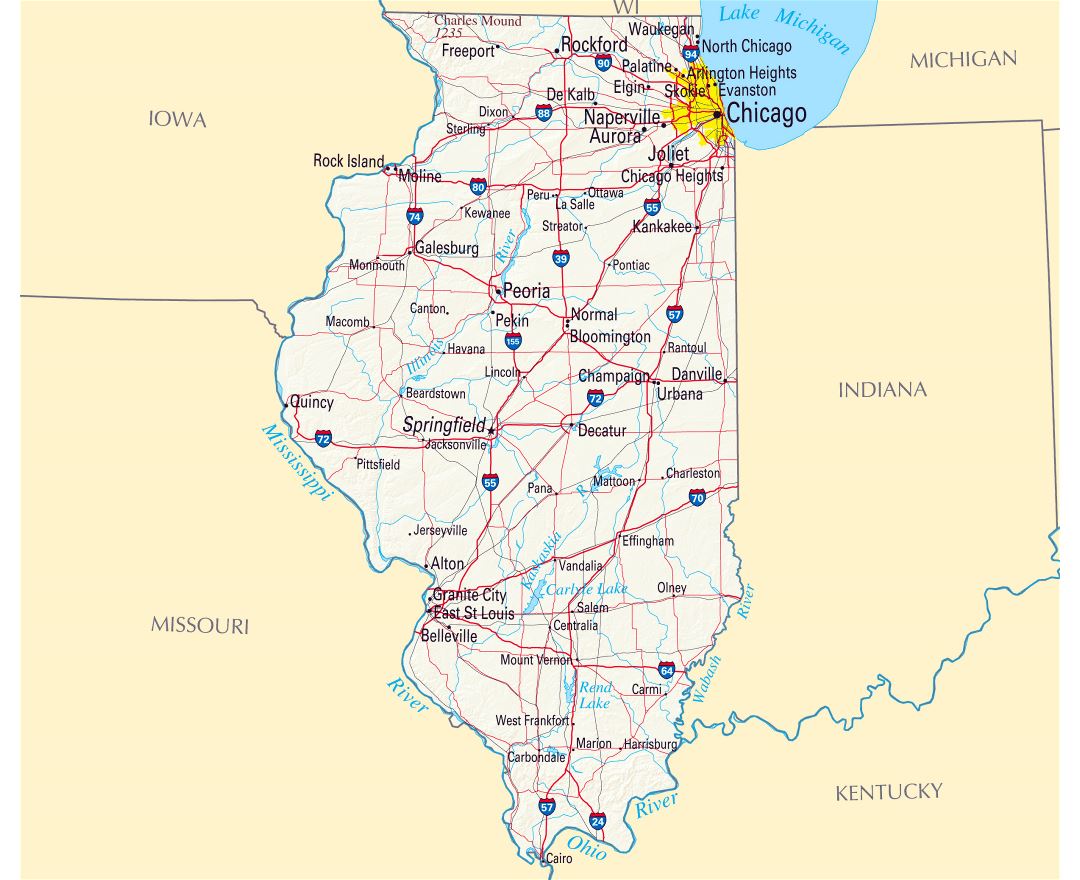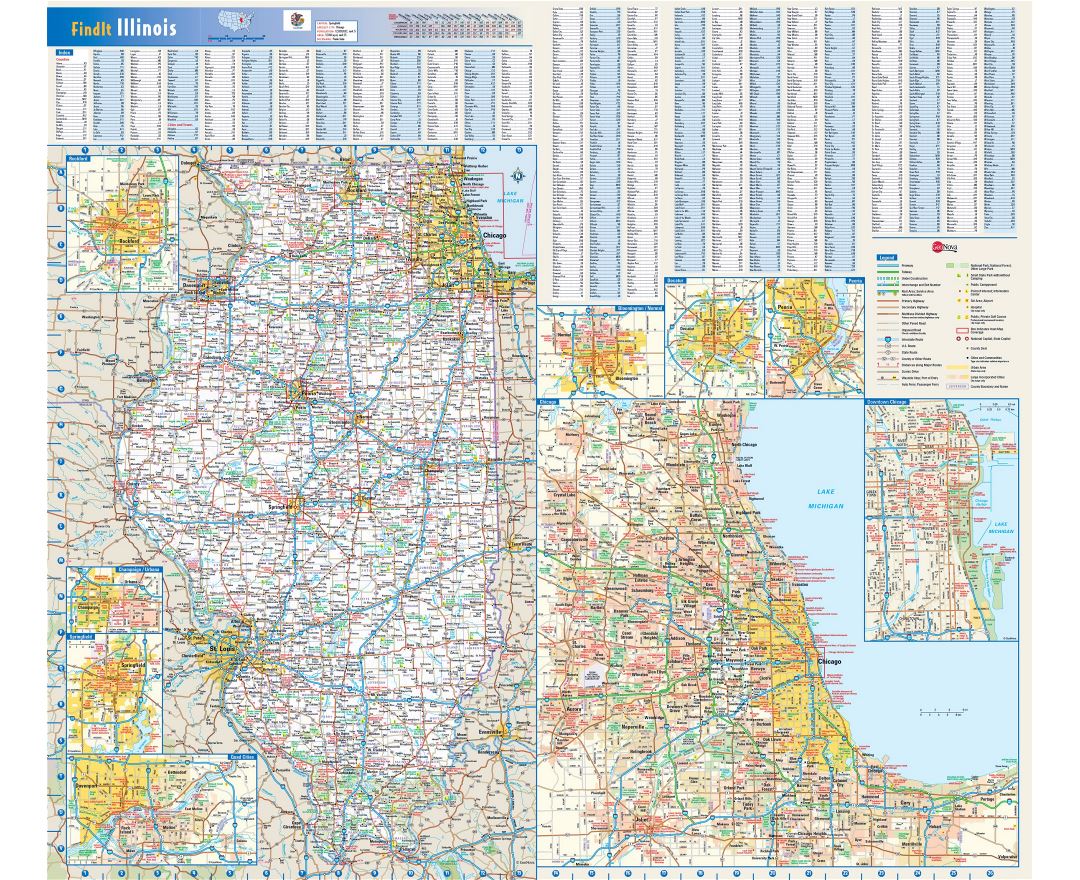Illinois state
Illinois is a state in the midwestern region of the United States, achieving statehood in 1818. It is the 5th most populous state and 25th largest state in terms of land area, and is often noted as a microcosm of the entire country. With Chicago in the northeast, small industrial cities and great agricultural productivity in central and northern Illinois, and natural resources like coal, timber, and petroleum in the south, Illinois has a diverse economic base and is a major transportation hub. The Port of Chicago connects the state to other global ports from the Great Lakes, via the Saint Lawrence Seaway, to the Atlantic Ocean, as well as the Great Lakes to the Mississippi River, via the Illinois River. For decades, O'Hare International Airport has been ranked as one of the world's busiest airports. Illinois has long had a reputation as a bellwether both in social and cultural terms and politics.
Although today the state's largest population center is around Chicago in the northern part of the state, the state's European population grew first in the west, with French Canadians who settled along the Mississippi River, and gave the area the name, Illinois. After the American Revolutionary War established the United States, American settlers began arriving crossing the Appalachians barrier range in the 1810s via the gaps of the Allegheny to boat building centers in Pittsburgh, from Cumberland, Maryland via the Cumberland Narrows pass to outfit in Brownsville, Pennsylvania, from North Carolina and Virginia via the Cumberland Gap to Kentucky and Tennessee, all on the Ohio River.
The riverboats built in Pittsburgh, Brownsville and along the lower Ohio Valley were safe and capable so emigrants polling boats northwards from the confluence against the current up the lazy Mississippi (as had the French settlers) to other destinations on either bank was a common sight for over six decades (1790s-1860s) and the population of Illinois grew from south to north as immigration from Europe, large families in the burgeoning eastern populous, and the exhausting of the poor farming lands of the East each had an impact.
With the War of 1812 Illinois growth slowed as Amerindians and Canadian forces oft raided the American Frontier. After the war's end, the federal government re-established forts such as Fort Dearborn (in 1816 - now the site is within Chicago) and army patrols west of the Mississippi diminished the threat from Amerindian raids, so settlers were able to move into all of Illinois from the eastern and southern emigrant trails.
Mineral finds and timber stands also had spurred immigration - by the 1810s, the Eastern U.S. had exhausted most timber stands close to the established cities creating a hard felt first energy crisis by the late 1790s, and after 1818 the industrial revolution was being fueled by new canals such as the Lehigh Canal feeding the furnaces of the rapidly industrializing east coast. In the same year of 1818, Illinois achieved statehood and its growth, as yet untroubled by the speed of as yet unrefined railway technology, would be fueled by the new religion of industrialized forward thinking.
After construction of the Erie Canal with increasing traffic and trade through the Great Lakes, Chicago was founded in the 1830s on the banks of the Chicago River, at one of the few natural harbors on southern Lake Michigan. John Deere's invention of the self-scouring steel plow turned Illinois' rich prairie into some of the world's most productive and valuable farmlands, attracting new immigrant farmers from Germany and Sweden. Railroads arose and matured in the 1840s, and soon carried immigrants to new homes in Illinois, as well as being a resource to ship their commodity crops out to markets. Railroads freed most of the land of Illinois and other mid-western states from the tyranny of water transport; no longer was a location near a river or canal a need to ship bulk goods.
By 1900, the growth of industrial jobs in the northern cities and coal mining in the central and southern areas attracted a new group of immigrants, from Eastern and Southern Europe. Illinois was an important manufacturing center during both world wars. The Great Migration from the South established a large community of African Americans in Chicago, who created the city's famous jazz and blues cultures.
Three U.S. presidents have been elected while living in Illinois: Abraham Lincoln, Ulysses S. Grant, and Barack Obama. Additionally, Ronald Reagan, whose political career was based in California, was the only U.S. president born and raised in Illinois. Today, Illinois honors Lincoln with its official state slogan, Land of Lincoln, which has been displayed on its license plates since 1954. The Abraham Lincoln Presidential Library and Museum is located in the state capital of Springfield, and the Barack Obama Presidential Center will be completed in Chicago by 2020.

